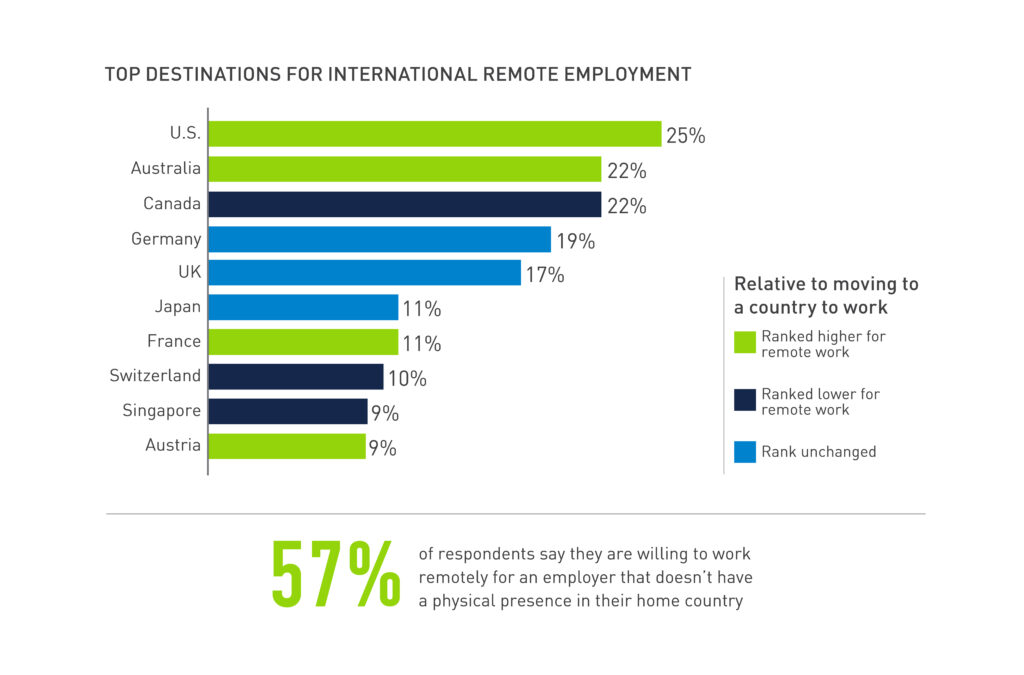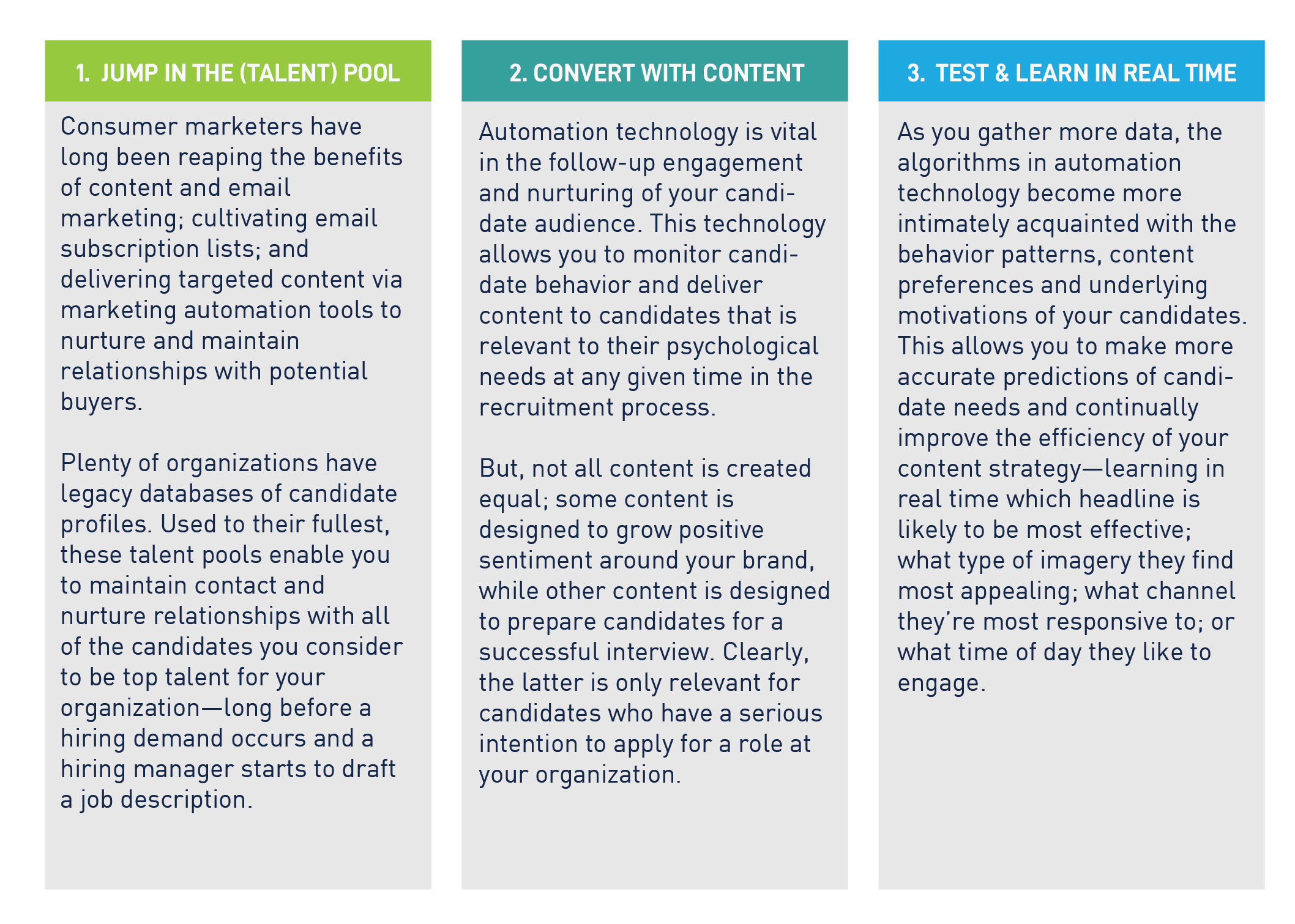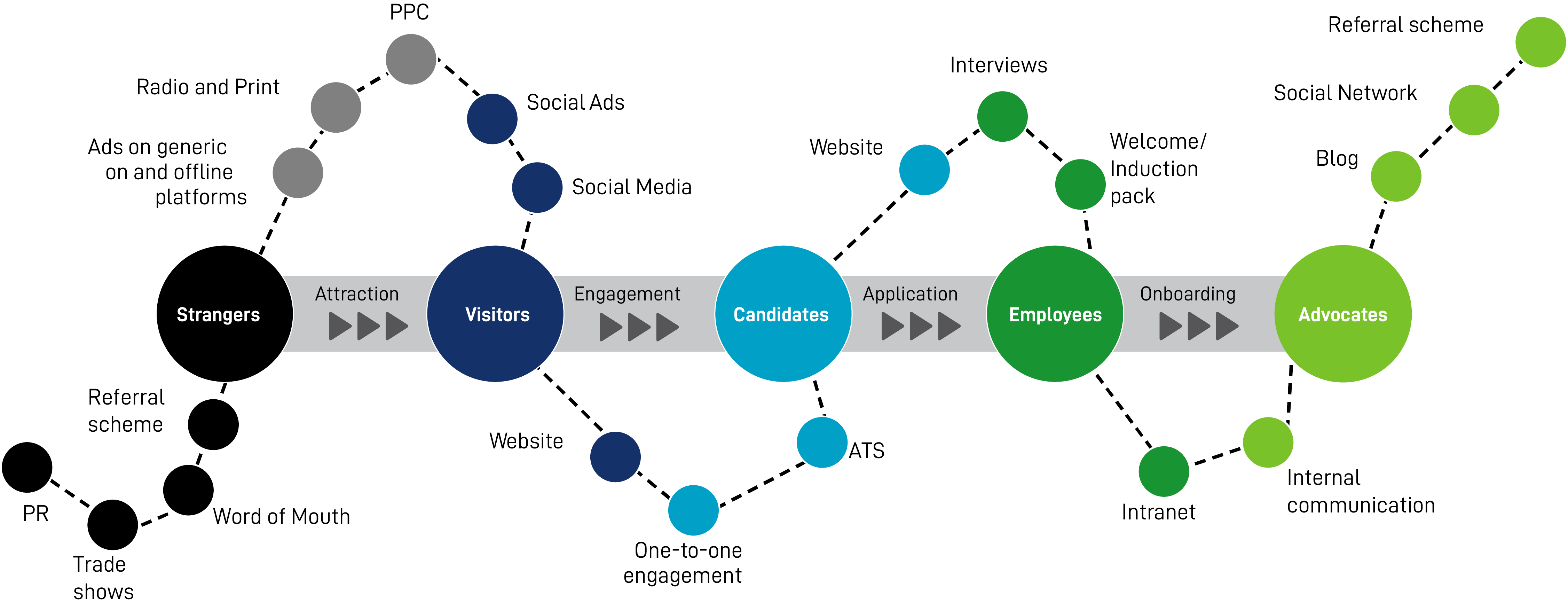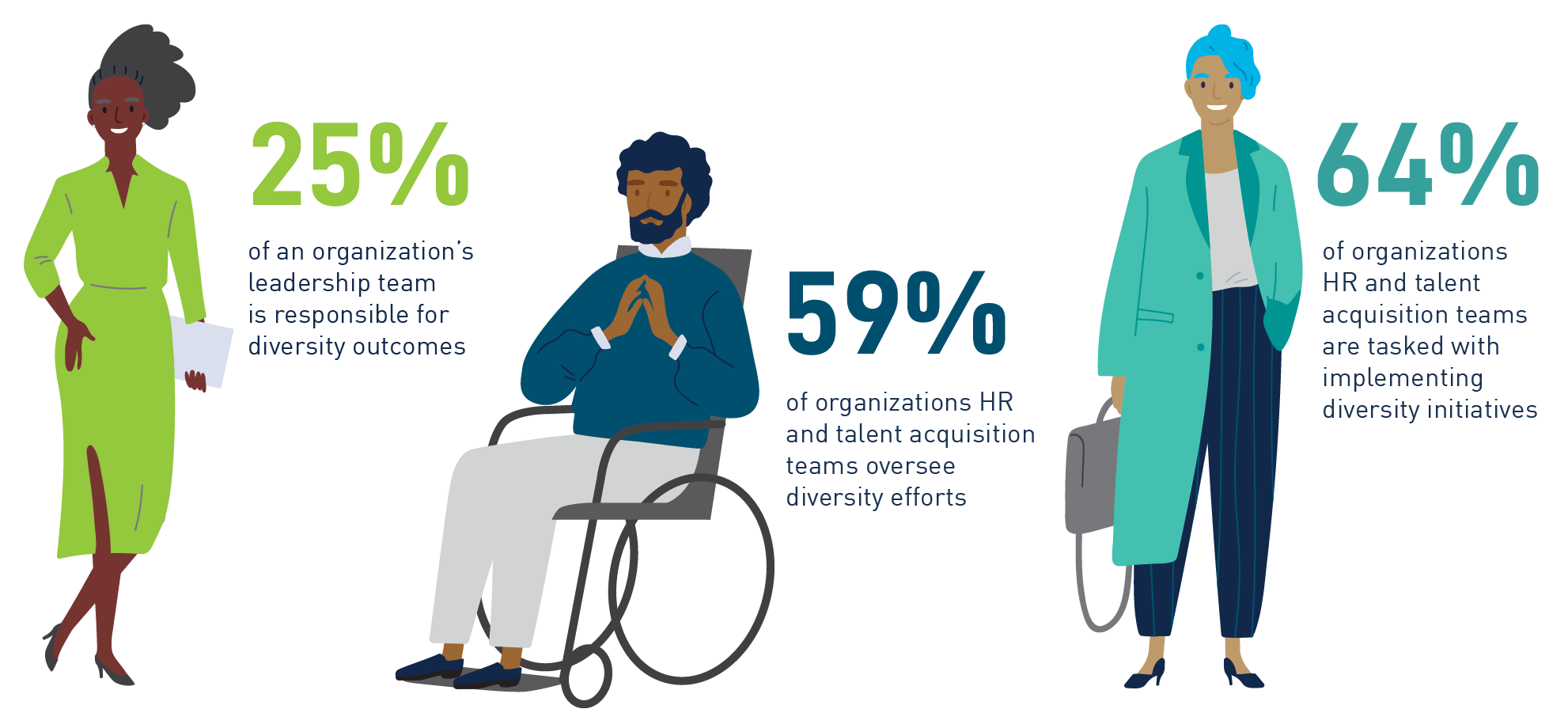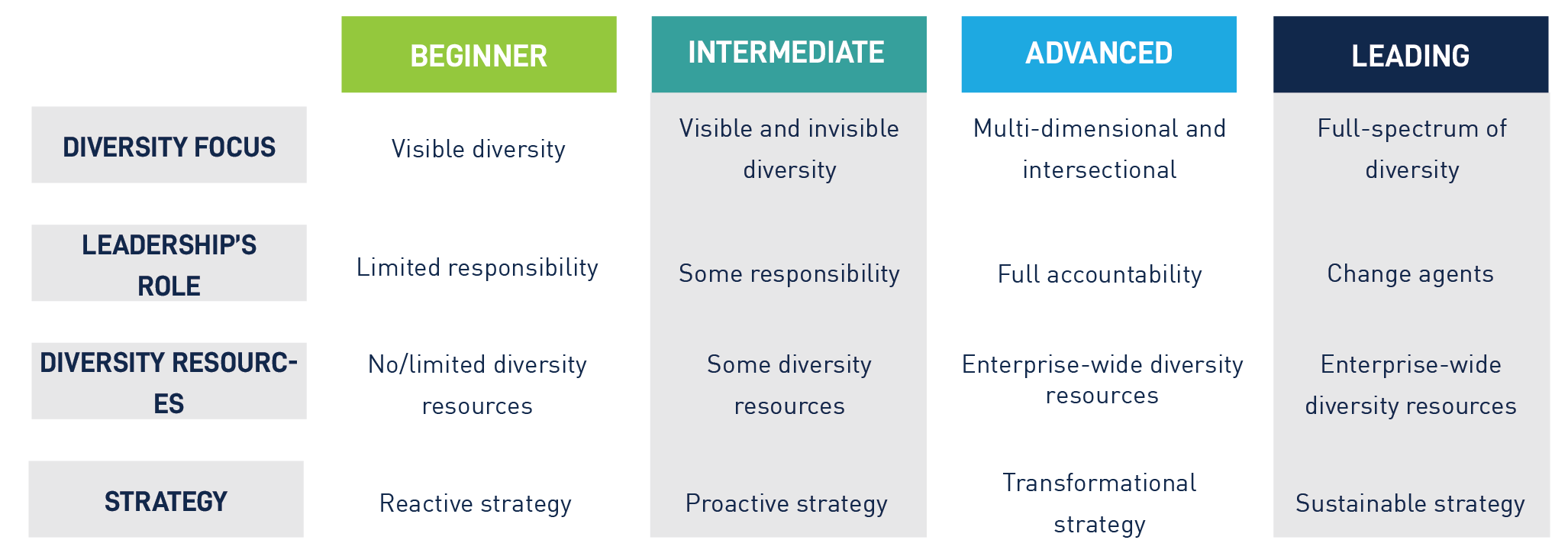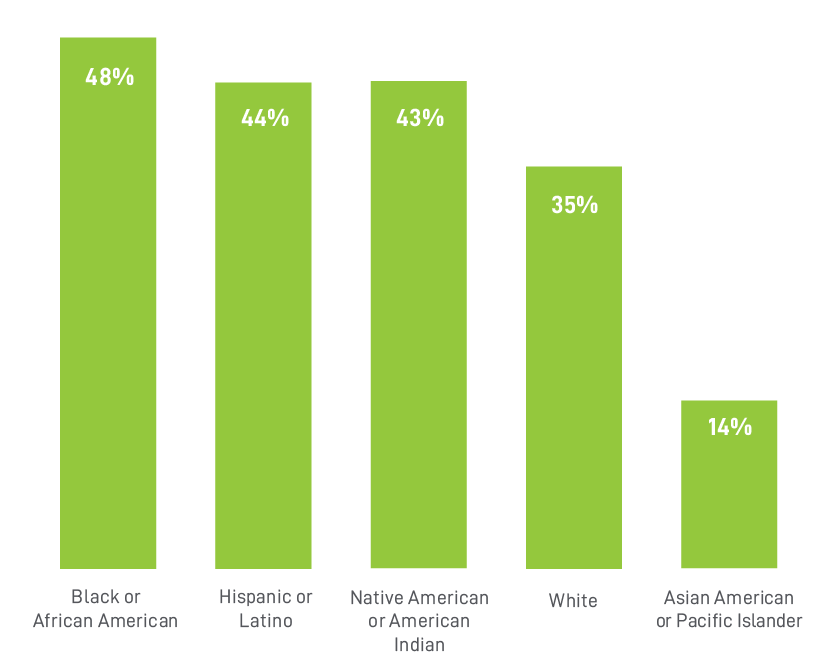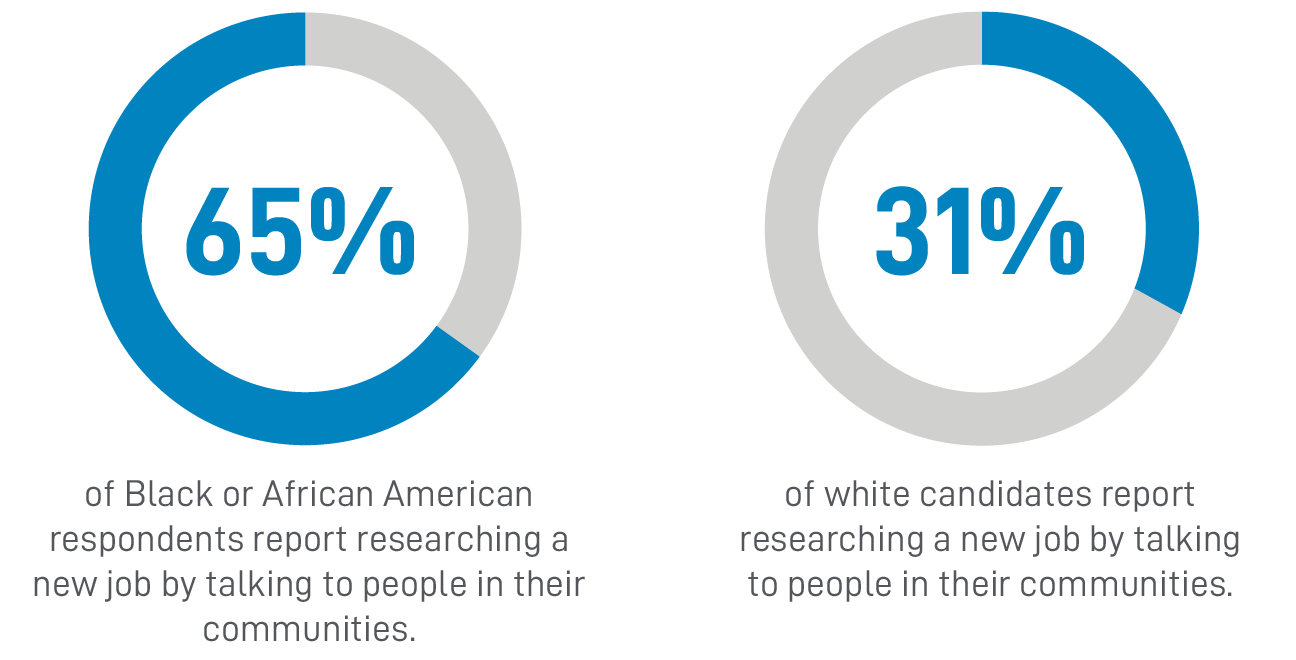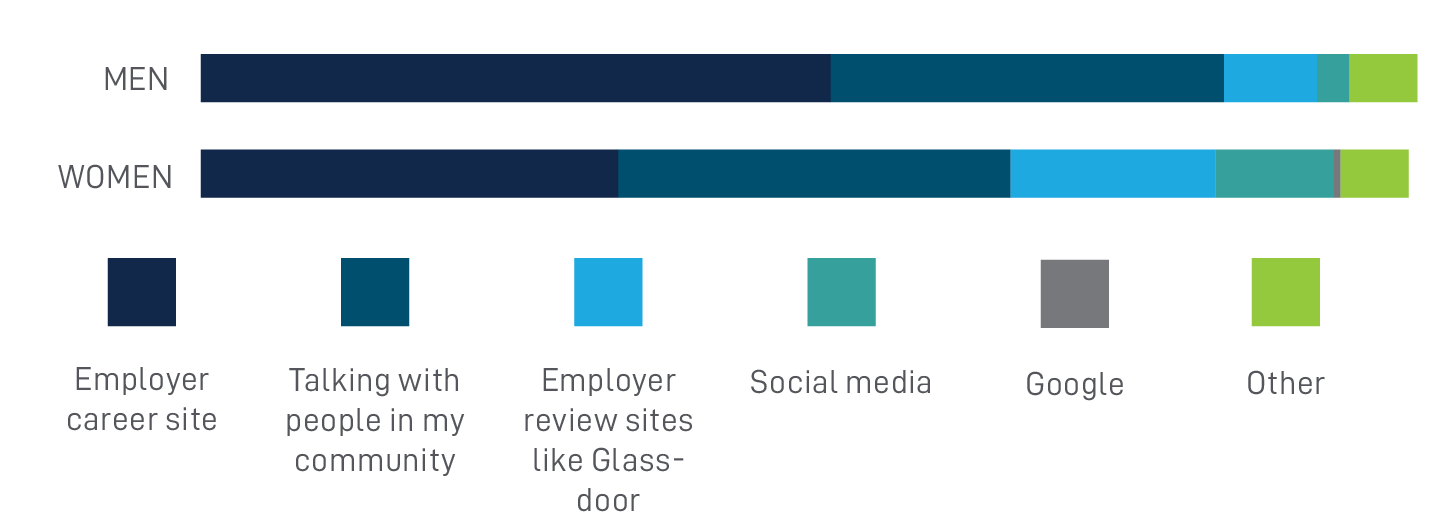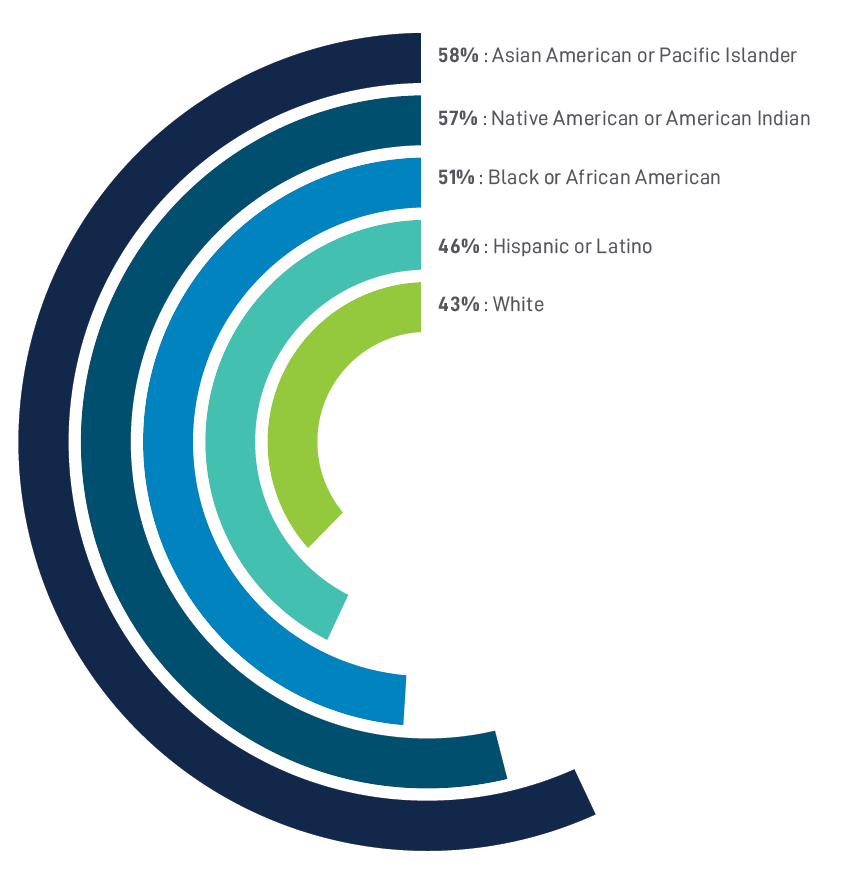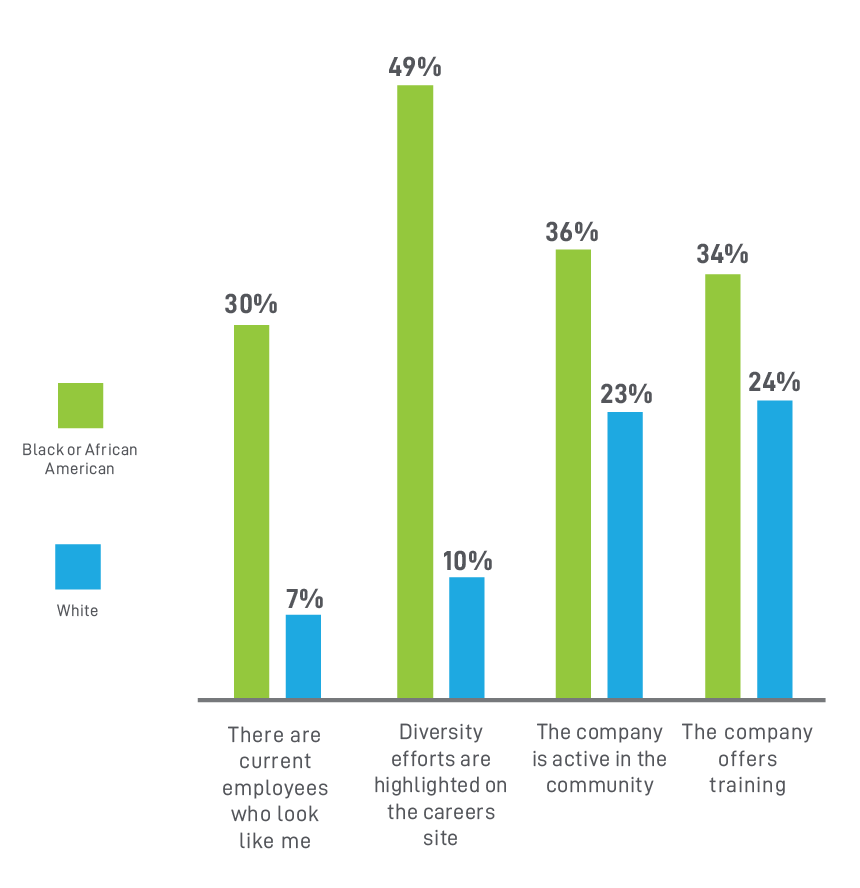Diversity sourcing is a top priority in talent acquisition. A recent PwC survey found that 57% of CFOs planned to invest in diversity and inclusion initiatives in the next year. But, with investment comes accountability; you can’t track and report your progress without the proper technology tools. So, as employers continue to prioritize diversity, equity and inclusion, talent leaders need the proper tools to understand the progress they’re making toward reaching their DE&I goals.
Additionally, despite the progress made throughout the last few years, employers still have a long way to go. In fact, according to a survey by Boston Consulting Group, only 25% of employees from underrepresented backgrounds said that they had benefited from their company’s diversity and inclusion programs—despite the fact that most companies have these programs in place.
In this article, we’ll discuss how the right technology tools can help measure and improve diversity, equity and inclusion in your recruitment process.
Optimizing Diversity Sourcing
DE&I hiring efforts start at the beginning with diversity sourcing; you can’t hire diverse candidates without a diverse pipeline. And, to build a diverse candidate pipeline, you need to track who your candidates are and which of your sourcing channels and campaigns bring them into the recruitment process.
To further understand who your candidates are, it’s essential to capture their demographic information in your applicant tracking system (ATS) through self-identification via the employment application. However, because some candidates from underrepresented groups may feel uncomfortable disclosing this information in an application, it’s best practice to also ask for self-identification after you extend an offer or when a new employee goes through the onboarding process.
Then, track the sourcing channel through your candidate relationship management (CRM) software, which is critically important to track your recruitment marketing campaigns, as well as sources. Simply tracking that a candidate came to your careers site through LinkedIn isn’t enough; you need to know if a specific campaign on LinkedIn influenced their decision to apply.
Often, these data points are stored in different systems. But, a reporting tool can help synthesize your data and visualize trends. Specifically, with PeopleScout’s Affinix® Analytics diversity dashboards, you can track how diverse candidates are entering your pipeline in real time. Then, by tracking how candidates progress through your funnel, you can determine which sources and campaigns bring in the highest-quality candidates from underrepresented groups. From there, you can then adjust your sourcing spend to maximize the channels and promotions that bring in the most and highest-quality candidates.
For instance, you may find that a recruitment marketing campaign you’re running on LinkedIn that features diverse faces and real employee stories is bringing in far more diverse candidates than the same campaign on Facebook. You could then shift budget from the Facebook campaign to the LinkedIn campaign, thereby optimizing your channels. Additionally, you could compare the LinkedIn campaign featuring diverse employees to a different LinkedIn campaign featuring your office space and benefits package to see which type of content resonates best with candidates.
As an example, when one PeopleScout industrial client wanted to add more women to its primarily male workforce, we partnered with the company to build out a recruitment marketing initiative featuring the organization’s female employees. In tracking the results of the campaign, our client was able to see a marked increase in female applicants and hires tied directly to the recruitment marketing initiative.
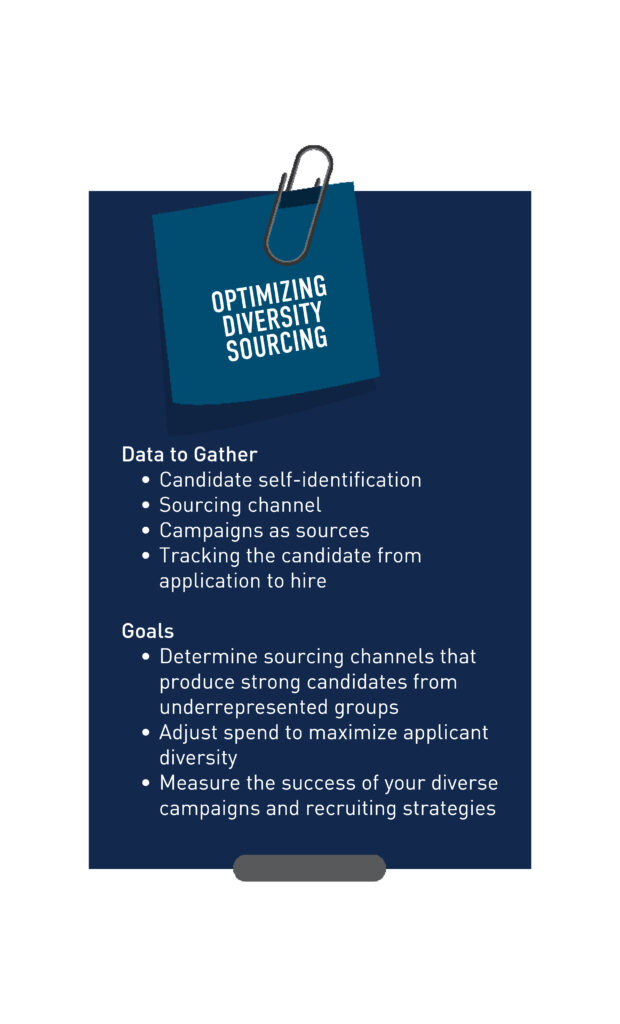
Identifying Barriers in Your Process
Building a more diverse, equitable and inclusive process doesn’t stop with sourcing; if you’re bringing a robust slate of diverse candidates into your pipeline, but very few candidates from underrepresented groups are actually hired, you may have a barrier somewhere else in your process: This could be an assessment with an unintentional bias; a recruiter or hiring manager who could benefit from more training; or an issue with your employment offers. In this situation, the right data can help determine exactly where the issue is occurring in your process and whether changes would result in a more equitable recruitment process.
data accurately. Then, in your reporting tool, you’ll be able to identify if a particular step in your process precipitates a drop in candidate diversity.
For instance, your reporting may show that a recently added video interview step resulted in more candidates from diverse backgrounds dropping out of your funnel. In this case, you could try converting the video interview to a phone or on-demand audio interview to see if it improves results. Similarly, your reporting could show that you have one recruiter or hiring manager with a higher percentage of diverse candidates falling out, which could lead to an opportunity to implement more training. Or, you could see that candidates from diverse backgrounds are successful throughout your recruitment process, but then turn down your employment offers. If that’s the case, then you may want to look at your benefits, offer process or employer value proposition.
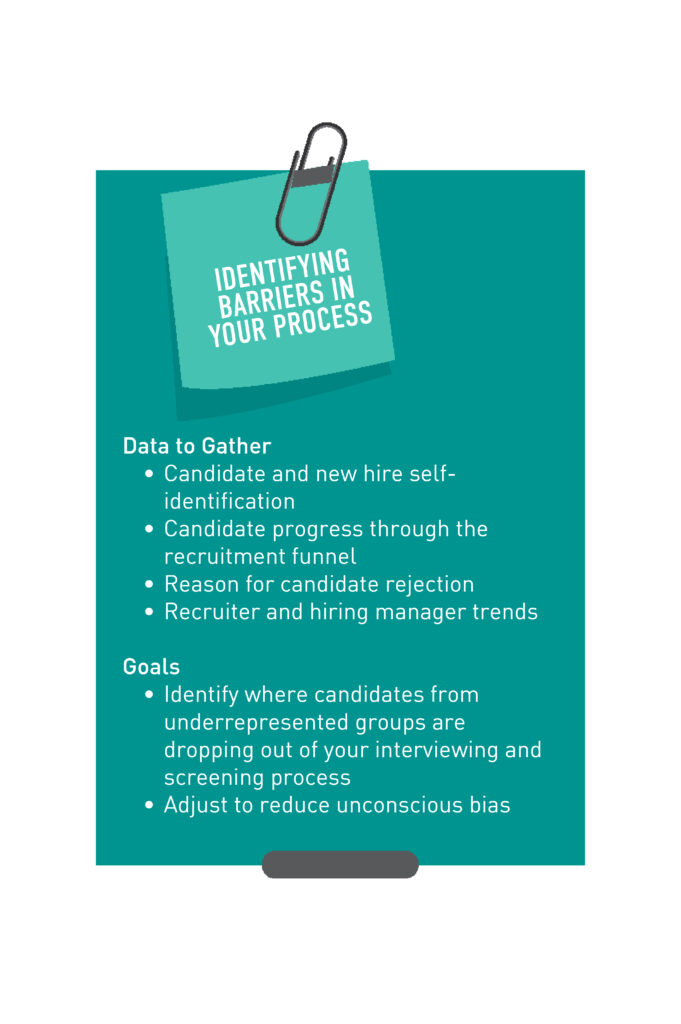
Using Surveys to Improve Inclusion
Our first examples focused on improving diversity sourcing and equity in the recruitment funnel, but you can also use data to measure and improve inclusion. Your goal is to understand how candidates feel about your hiring process, as well as how new employees feel about your onboarding process and company culture—and the best way to measure this is to simply ask them.
In fact, you can and should survey candidates at different stages of your recruitment funnel. Fortunately, there are a variety of candidate survey tools that you can integrate into your ATS to automatically ask candidates for feedback about their experiences, which can then provide critical insights about points where you may be alienating certain candidates. Yet, very few employers regularly ask candidates for feedback about the recruitment process: According to a survey by PeopleScout and HRO Today, only 29% of employers in North America regularly ask for candidate feedback, while 33% never do so. In Europe, the Middle East and Africa (EMEA), the data is somewhat better, with 42% of recruiters reporting that they regularly request candidate feedback, whereas 24% say that they never do.
Essentially, there are two different ways you can gather and gauge the results of your surveys, and it all comes down to the questions that you ask. A strong survey will have a mixture of both scored questions and open text responses; the scores help you identify trends over time, while the text responses help you drill into specifics.
Surveys can also help measure your success and identify problem areas—especially when coupled with your recruiting data. For example, if you ask candidates how they feel about the interview process and those scores start to trend downward, you can review your recruiting data to see if you notice any changing trends. Likewise, if you see more candidates from underrepresented backgrounds dropping out just before or after an interview, you can evaluate and determine why your interview process is negatively affecting candidates—especially if you also have text responses that provide specific feedback.
Going a step further, you can also survey new hires to measure inclusion in your onboarding process. A Gartner study featured in the Harvard Business Review identified seven factors that can provide a holistic view of inclusion within your organization:
- Fair treatment: Employees at my organization who help the organization achieve its strategic objectives are rewarded and recognized fairly.
- Integrating differences: Employees at my organization respect and value each other’s opinions.
- Decision-making: Members of my team fairly consider ideas and suggestions offered by other team members.
- Psychological safety: I feel welcome to express my true feelings at work.
- Trust: Communication we receive from the organization is honest and open.
- Belonging: People in my organization care about me.
- Diversity: Managers at my organization are as diverse as the broader workforce.
Then, if your survey finds that new hires from underrepresented backgrounds feel less of a sense of belonging or less safe expressing their true feelings at work, you can evaluate and improve your onboarding process and, through further surveys, measure the influence of any changes you make.
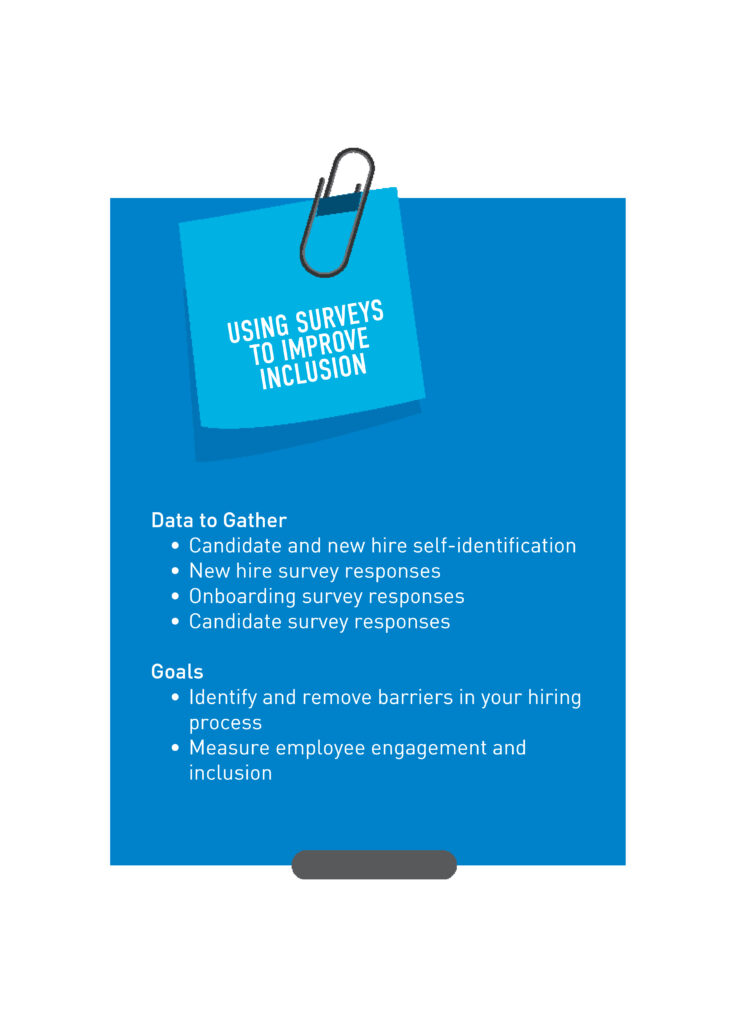
As employers continue to work to improve diversity sourcing, equity and inclusion within their organizations, it’s critical to have the right tools in place to identify opportunities for improvement and measure success. Talent acquisition leaders play an important role in achieving those goals, and a trusted RPO and technology partner can provide valuable insights and market trends. To learn more about what talent leaders can do, download our ebook, Progress in Action: Moving Toward a Globally Diverse and Inclusive Workplace.
